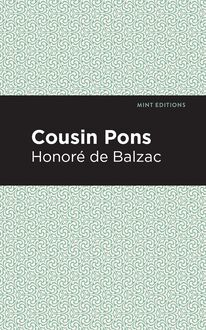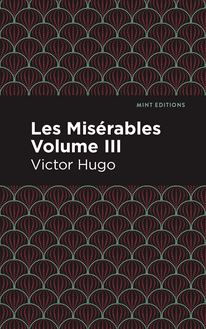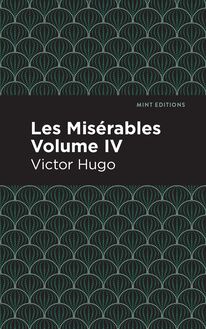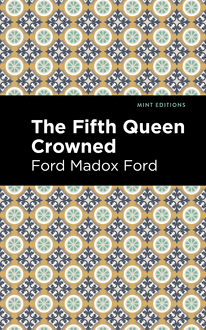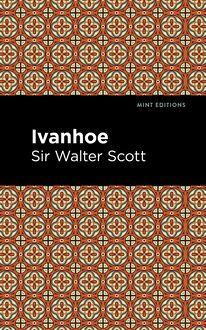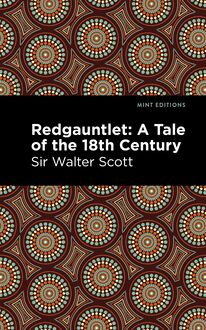-
 Univers
Univers
-
 Ebooks
Ebooks
-
 Livres audio
Livres audio
-
 Presse
Presse
-
 Podcasts
Podcasts
-
 BD
BD
-
 Documents
Documents
-
- Cours
- Révisions
- Ressources pédagogiques
- Sciences de l’éducation
- Manuels scolaires
- Langues
- Travaux de classe
- Annales de BEP
- Etudes supérieures
- Maternelle et primaire
- Fiches de lecture
- Orientation scolaire
- Méthodologie
- Corrigés de devoir
- Annales d’examens et concours
- Annales du bac
- Annales du brevet
- Rapports de stage
La lecture à portée de main
Vous pourrez modifier la taille du texte de cet ouvrage
Découvre YouScribe en t'inscrivant gratuitement
Je m'inscrisDécouvre YouScribe en t'inscrivant gratuitement
Je m'inscrisEn savoir plus
Vous pourrez modifier la taille du texte de cet ouvrage
En savoir plus

Description
After Fantine’s death, her daughter Cosette remains at the inn where she endures frequent abuse from the owners before the unexpected arrival of Jean Valjean. The duo unites and work to create a better life for themselves away from the city.
Following the events of Les Misérables Volume One: Fantine, Jean Valjean is once again on the wrong side of the law. After being sentenced to hard labor and eventually the death penalty, he barely escapes with his life. He travels to an inn where he encounters Cosette, the orphaned daughter of Fantine. He notices her abusive living conditions and attempts to remove her from the innkeepers care. Together, Jean and Cosette break away from the clutches of the owners as well as the cruel Inspector Javert.
Les Misérables Volume Two: Cosette is the continuation of the tumultuous story of Jean Valjean. This is one part of a captivating tale that’s been adapted multiple times for stage, television and film. The most notable being the 2012 Oscar-winning production from director, Tom Hooper.
With an eye-catching new cover, and professionally typeset manuscript, this edition of Les Misérables Volume Two: Cosette is both modern and readable.
Sujets
Informations
| Publié par | Mint Editions |
| Date de parution | 24 mars 2021 |
| Nombre de lectures | 3 |
| EAN13 | 9781513264011 |
| Langue | English |
| Poids de l'ouvrage | 2 Mo |
Informations légales : prix de location à la page 0,0500€. Cette information est donnée uniquement à titre indicatif conformément à la législation en vigueur.
Extrait
Les Misérables
Volume II: Cosette
Victor Hugo
Les Misérables was first published in 1862.
This edition published by Mint Editions 2021.
ISBN 9781513263465 | E-ISBN 9781513264011
Published by Mint Editions®
minteditionsbooks.com
Publishing Director: Jennifer Newens
Design & Production: Rachel Lopez Metzger
Project Manager: Micaela Clark
Translated by: Isabel F. Hapgood
Typesetting: Westchester Publishing Services
More in This Series:
Les Misérables Volume I: Fantine
Les Misérables Volume III: Marius
Les Misérables Volume IV: The Idyll in the Rue Plumet and the Epic in the Rue St. Denis
Les Misérables Volume V: Jean Valjean
C ONTENTS B OOK F IRST . W ATERLOO I. W HAT IS M ET WITH ON THE W AY FROM N IVELLES II. H OUGOMONT III. T HE E IGHTEENTH OF J UNE , 1815 IV. A V. T HE Q UID O BSCURUM OF B ATTLES VI. F OUR O’ CLOCK IN THE A FTERNOON VII. N APOLEON IN A G OOD H UMOR VIII. T HE E MPEROR PUTS A Q UESTION TO THE G UIDE L ACOSTE IX. T HE U NEXPECTED X. T HE P LATEAU OF M ONT -S AINT -J EAN XI. A B AD G UIDE TO N APOLEON ; A G OOD G UIDE TO B ÜLOW XII. T HE G UARD XIII. T HE C ATASROPHE XIV. T HE L AST S QUARE XV. C AMBRONNE XVI. Q UOT L IBRAS IN D UCE ? XVII. I S W ATERLOO TO BE C ONSIDERED G OOD ? XVIII. A R ECRUDESCENCE OF D IVINE R IGHT XIX. T HE B ATTLE - FIELD AT N IGHT B OOK S ECOND . T HE S HIP O RION I. N UMBER 24,601 B ECOMES N UMBER 9,430 II. I N WHICH THE R EADER WILL P ERUSE T WO V ERSES , WHICH ARE OF THE D EVILS ’ C OMPOSITION P OSSIBLY III. T HE A NKLE -C HAIN MUST HAVE U NDERGONE A C ERTAIN P REPARATORY M ANIPULATION TO BE THUS B ROKEN WITH A B LOW FROM A H AMMER B OOK T HIRD . A CCOMPLISHMENT OF THE P ROMISE M ADE TO THE D EAD W OMAN I. T HE W ATER Q UESTION AT M ONTFERMEIL II. T WO C OMPLETE P ORTRAITS III. M EN HAVE W INE , AND H ORSES MUST HAVE W ATER IV. E NTRANCE ON THE S CENE OF A D OLL V. T HE L ITTLE O NE A LL A LONE VI. W HICH P OSSIBLY P ROVES B OULATRUELLE ’ S I NTELLIGENCE VII. C OSETTE S IDE BY S IDE WITH THE S TRANGER IN THE D ARK VIII. T HE U NPLEASANTNESS OF R ECEIVING INTO O NE ’ S H OUSE A P OOR M AN WHO M AY BE A R ICH M AN IX. T HÉNARDIER AND HIS MAN ŒUVRES X. H E WHO S EEKS TO B ETTER HIMSELF M AY R ENDER HIS S ITUATION W ORSE XI. N UMBER 9,430 R EAPPEARS AND C OSETTE W INS IT IN THE L OTTERY B OOK F OURTH . T HE G ORBEAU H OVEL I. M ASTER G ORBEAU II. A N EST FOR O WL AND A W ARBLER III. T WO M ISFORTUNES M AKE O NE P IECE OF G OOD F ORTUNE IV. T HE R EMARKS OF THE P RINCIPAL T ENANT V. A F IVE -F RANC P IECE F ALLS ON THE G ROUND AND P RODUCES A T UMULT B OOK F IFTH . F OR A B LACK H UNT , A M UTE P ACK I. T HE Z IGZAGS OF S TRATEGY II. I T IS L UCKY THAT THE P ONT D’A USTERLITZ B EARS C ARRIAGES III. T O W IT , THE P LAN OF P ARIS IN 1727 IV. T HE G ROPINGS OF F LIGHT V. W HICH WOULD BE I MPOSSIBLE WITH G AS L ANTERNS VI. T HE B EGINNING OF AN E NIGMA VII. C ONTINUATION OF THE E NIGMA VIII. T HE E NIGMA B ECOMES D OUBLY M YSTERIOUS IX. T HE M AN WITH THE B ELL X. W HICH E XPLAINS HOW J AVERT GOT ON THE S CENT B OOK S IXTH . L E P ETIT -P IC P US I. N UMBER 62 R UE P ETIT -P ICPUS II. T HE O BEDIENCE OF M ARTIN V ERGA III. A USTERITIES IV. G AYETIES V. D ISTRACTIONS VI. T HE L ITTLE C ONVENT VII. S OME S ILHOUETTES OF THIS D ARKNESS VIII. P OST C ORDA L APIDES IX. A C ENTURY U NDER A G UIMPE X. O RIGIN OF THE P ERPETUAL A DORATION XI. E ND OF THE P ETIT -P ICPUS B OOK S EVENTH . P ARENTHESIS I. T HE C ONVENT AS AN A BSTRACT I DEA II. T HE C ONVENT AS A H ISTORICAL F ACT III. O N W HAT C ONDITIONS O NE C AN R ESPECT THE P AST IV. T HE C ONVENT FROM THE P OINT OF V IEW OF P RINCIPLES V. P RAYER VI. T HE A BSOLUTE G OODNESS OF P RAYER VII. P RECAUTIONS TO BE O BSERVED IN B LAME VIII. F AITH , L AW B OOK E IGHTH . C EMETERIES T AKE THAT WHICH IS C OMMITTED T HEM I. W HICH T REATS OF THE M ATTER OF E NTERING A C ONVENT II. F AUCHELEVENT IN THE P RESENCE OF A D IFFICULTY III. M OTHER I NNOCENTE IV. I N WHICH J EAN V ALJEAN HAS Q UITE THE A IR OF H AVING TO R EAD A USTIN C ASTILLEJO V. I T IS NOT N ECESSARY TO BE D RUNK IN O RDER TO BE I MMORTAL VI. B ETWEEN F OUR P LANKS VII. I N WHICH WILL BE F OUND THE O RIGIN OF THE S AYING : D ON ’ T L OSE THE C ARD VIII. A S UCCESSFUL I NTERROGATORY IX. C LOISTERED
BOOK FIRST
WATERLOO
I
W HAT IS M ET WITH ON THE W AY FROM N IVELLES
Last year (1861), on a beautiful May morning, a traveller, the person who is telling this story, was coming from Nivelles, and directing his course towards La Hulpe. He was on foot. He was pursuing a broad paved road, which undulated between two rows of trees, over the hills which succeed each other, raise the road and let it fall again, and produce something in the nature of enormous waves.
He had passed Lillois and Bois-Seigneur-Isaac. In the west he perceived the slate-roofed tower of Braine-l’Alleud, which has the form of a reversed vase. He had just left behind a wood upon an eminence; and at the angle of the crossroad, by the side of a sort of mouldy gibbet bearing the inscription Ancient Barrier No. 4 , a public house, bearing on its front this sign: At the Four Winds (Aux Quatre Vents). Échabeau, Private Café .
A quarter of a league further on, he arrived at the bottom of a little valley, where there is water which passes beneath an arch made through the embankment of the road. The clump of sparsely planted but very green trees, which fills the valley on one side of the road, is dispersed over the meadows on the other, and disappears gracefully and as in order in the direction of Braine-l’Alleud.
On the right, close to the road, was an inn, with a four-wheeled cart at the door, a large bundle of hop-poles, a plough, a heap of dried brushwood near a flourishing hedge, lime smoking in a square hole, and a ladder suspended along an old penthouse with straw partitions. A young girl was weeding in a field, where a huge yellow poster, probably of some outside spectacle, such as a parish festival, was fluttering in the wind. At one corner of the inn, beside a pool in which a flotilla of ducks was navigating, a badly paved path plunged into the bushes. The wayfarer struck into this.
After traversing a hundred paces, skirting a wall of the fifteenth century, surmounted by a pointed gable, with bricks set in contrast, he found himself before a large door of arched stone, with a rectilinear impost, in the sombre style of Louis XIV, flanked by two flat medallions. A severe fa ç ade rose above this door; a wall, perpendicular to the fa ç ade, almost touched the door, and flanked it with an abrupt right angle. In the meadow before the door lay three harrows, through which, in disorder, grew all the flowers of May. The door was closed. The two decrepit leaves which barred it were ornamented with an old rusty knocker.
The sun was charming; the branches had that soft shivering of May, which seems to proceed rather from the nests than from the wind. A brave little bird, probably a lover, was carolling in a distracted manner in a large tree.
The wayfarer bent over and examined a rather large circular excavation, resembling the hollow of a sphere, in the stone on the left, at the foot of the pier of the door.
At this moment the leaves of the door parted, and a peasant woman emerged.
She saw the wayfarer, and perceived what he was looking at.
“It was a French cannon-ball which made that,” she said to him. And she added:—
“That which you see there, higher up in the door, near a nail, is the hole of a big iron bullet as large as an egg. The bullet did not pierce the wood.”
“What is the name of this place?” inquired the wayfarer.
“Hougomont,” said the peasant woman.
The traveller straightened himself up. He walked on a few paces, and went off to look over the tops of the hedges. On the horizon through the trees, he perceived a sort of little elevation, and on this elevation something which at that distance resembled a lion.
He was on the battle-field of Waterloo.
II
H OUGOMONT
Hougomont,—this was a funereal spot, the beginning of the obstacle, the first resistance, which that great wood-cutter of Europe, called Napoleon, encountered at Waterloo, the first knot under the blows of his axe.
It was a ch â teau; it is no longer anything but a farm. For the antiquary, Hougomont is Hugomons . This manor was built by Hugo, Sire of Somerel, the same who endowed the sixth chaplaincy of the Abbey of Villiers.
The traveller pushed open the door, elbowed an ancient calash under the porch, and entered the courtyard.
The first thing which struck him in this paddock was a door of the sixteenth century, which here simulates an arcade, everything else having fallen prostrate around it. A monumental aspect often has its birth in ruin. In a wall near the arcade opens another arched door, of the time of Henry IV, permitting a glimpse of the trees of an orchard; beside this door, a manure-hole, some pickaxes, some shovels, some carts, an old well, with its flagstone and its iron reel, a chicken jumping, and a turkey spreading its tail, a chapel surmounted by a small bell-tower, a blossoming pear-tree trained in espalier against the wall of the chapel—behold the court, the conquest of which was one of Napoleon’s dreams. This corner of earth, could he but have seized it, would, perhaps, have given him the world likewise. Chickens are scattering its dust abroad with their beaks. A growl is audible; it is a huge dog, who shows his teeth and replaces the English.
The English behaved admirably there. Cooke’s four companies of guards there held out for seven hours against the fury of an army.
Hougomont viewed on the map, as a geometrical plan, comprising buildings and enclosures, presents a sort of irregular rectangle, one angle of which is nicked out. It is this angle which conta
-
 Univers
Univers
-
 Ebooks
Ebooks
-
 Livres audio
Livres audio
-
 Presse
Presse
-
 Podcasts
Podcasts
-
 BD
BD
-
 Documents
Documents
-
Jeunesse
-
Littérature
-
Ressources professionnelles
-
Santé et bien-être
-
Savoirs
-
Education
-
Loisirs et hobbies
-
Art, musique et cinéma
-
Actualité et débat de société
-
Jeunesse
-
Littérature
-
Ressources professionnelles
-
Santé et bien-être
-
Savoirs
-
Education
-
Loisirs et hobbies
-
Art, musique et cinéma
-
Actualité et débat de société
-
Actualités
-
Lifestyle
-
Presse jeunesse
-
Presse professionnelle
-
Pratique
-
Presse sportive
-
Presse internationale
-
Culture & Médias
-
Action et Aventures
-
Science-fiction et Fantasy
-
Société
-
Jeunesse
-
Littérature
-
Ressources professionnelles
-
Santé et bien-être
-
Savoirs
-
Education
-
Loisirs et hobbies
-
Art, musique et cinéma
-
Actualité et débat de société
- Cours
- Révisions
- Ressources pédagogiques
- Sciences de l’éducation
- Manuels scolaires
- Langues
- Travaux de classe
- Annales de BEP
- Etudes supérieures
- Maternelle et primaire
- Fiches de lecture
- Orientation scolaire
- Méthodologie
- Corrigés de devoir
- Annales d’examens et concours
- Annales du bac
- Annales du brevet
- Rapports de stage

